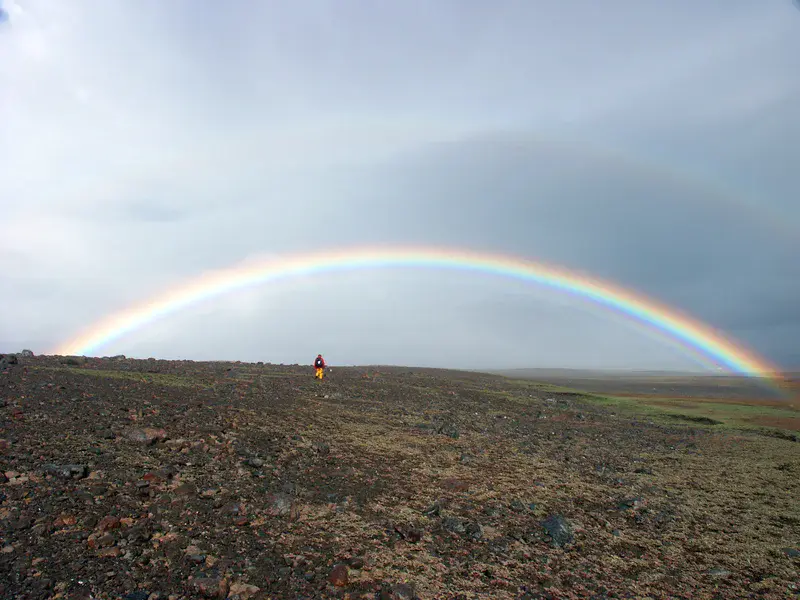
Field scientist under a spectacular rainbow
by François Dulac, CEA/LSCE, Saclay, France
At Kerguelen Island in the mid-latitudes of the remote southern Indian Ocean, the combination of very clean air, low sun and fast running low pressure systems carrying water clouds at low-level over the cold ocean make rainbows relatively frequent.
Walking back from our remote atmospheric sampling station to the base, we are taken by a shower and a few minutes later sunlight reflecting and diffracting in cloud droplets offers us this spectacular semi-circular rainbow. We see here an infrequent combination with (i) the main bright classical rainbow that shows up at 138-140 deg from the direction of the sunlight, (ii) a secondary rainbow due to double reflection of sunlight in droplets that appears higher on the horizon at an angle of about 127-130 deg and with an inversion of colors compared to the main bow (red inside), and (iii) one semi-circular and another supernummerary rainbows on the inner side of the primary bow. This stacker rainbow is caused by interferences and was first explained in 1804 by Thomas Young. It is an indication of small and monodisperse sized droplets. The dark area visible here on the right hand side between the primary and secondary rainbows is called the Alexander's band, after the ancien Greek philosopher Alexander of Aphrodisias comments on Aristotle's Meteorology treatise, published in the early 3rd century. It is due to a lack of light resulting from the fact that diffracted rays are either reflected back inside the primary rainbow (causing this area to be brighter) or outside the secondary rainbow.
Featured on GeoLog, the official blog of the European Geosciences Union
Categories
Location
- Polar regions (197)
- Antarctic (122)
- Exact location (70.1500 E, -49.3300 S)
Colours
Image properties
2560 × 1920 px;
image/jpeg; 2.6 MB
Camera:
Konica Minolta DiMAGE 7i
Taken on 2
February
2005
Submitted on 26 February 2014
Licence
Creative Commons Attribution-NonCommercial-NoDerivs 3.0 Unported (CC BY-NC-ND 3.0)
Credit
François Dulac (distributed via imaggeo.egu.eu)
Share
Appreciate
Report